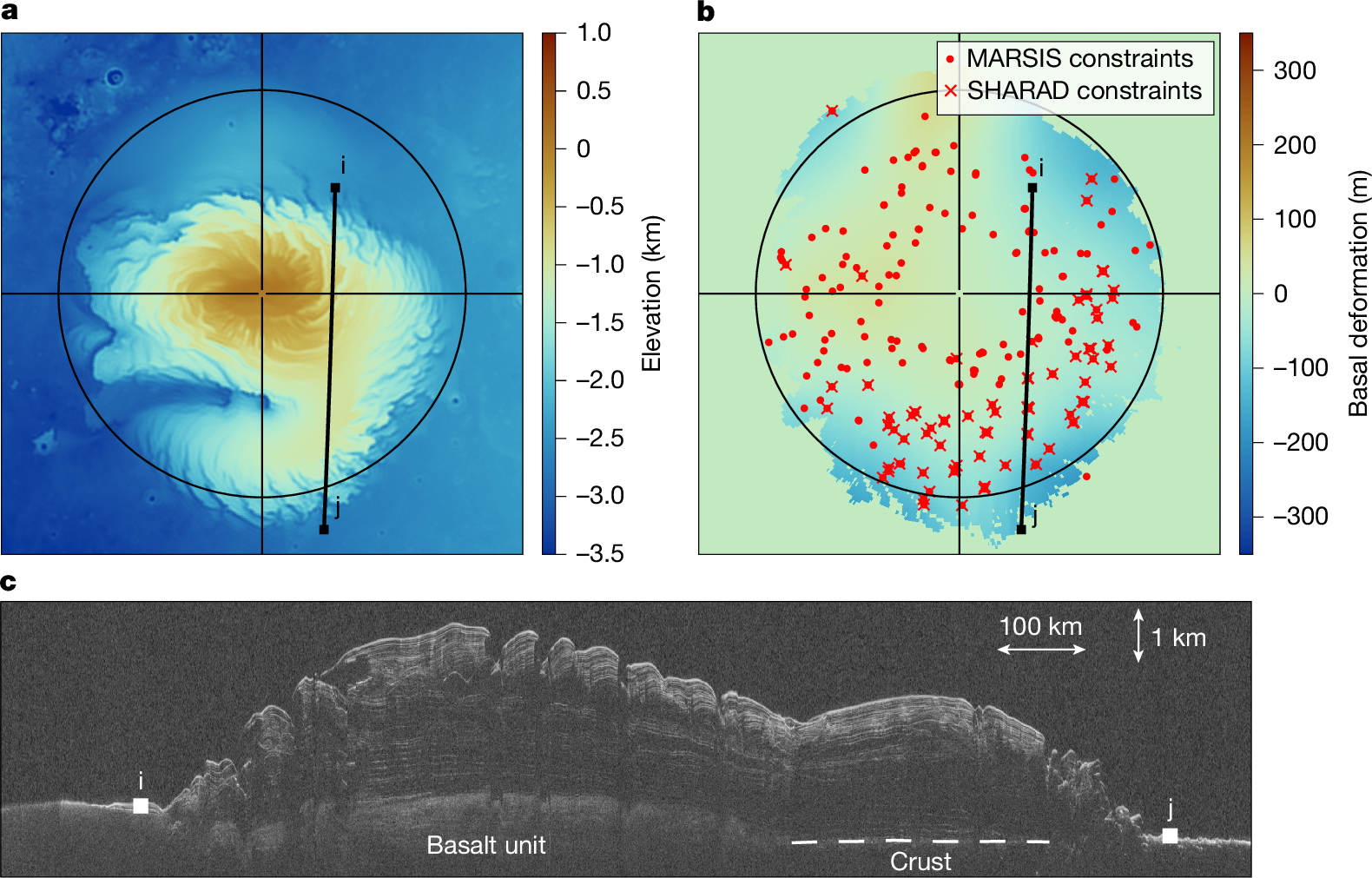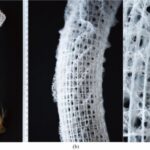2025-02-25 オランダ・デルフト工科大学 (TU Delft)
<関連情報>
- https://www.tudelft.nl/en/2025/tu-delft/new-research-reveals-mars-young-northern-ice-cap-and-the-surprises-below-its-surface
- https://www.nature.com/articles/s41586-024-08565-9
氷河期の地殻変動が明らかにする火星内部の粘性構造 Glacial isostatic adjustment reveals Mars’s interior viscosity structure
A. Broquet,A.-C. Plesa,V. Klemann,B. C. Root,A. Genova,M. A. Wieczorek,M. Knapmeyer,J. C. Andrews-Hanna & D. Breuer
Nature Published:26 February 2025
DOI:https://doi.org/10.1038/s41586-024-08565-9

Abstract
Investigating glacial isostatic adjustment has been the standard method to decipher Earth’s interior viscosity structure1,2, but such an approach has been rarely applied to other planets because of a lack of observational data3,4. The north polar cap of Mars is the only millions-of-years-old surface feature that can induce measurable surface deformation on this planet, thereby holding clues to its present-day internal viscosity structure5,6. Here we investigate the emplacement of this ice cap by combining thermal evolution models7, viscoelastic deformation calculations8 and radar observations6. We show that downward motion of the northern regions is ongoing and can be constrained by analyses of the time-variable gravity field9 and NASA’s InSight seismic moment rate10. Only models with present-day high viscosities (2–6 × 1022 Pa s for depths greater than 500 km), strong mantle depletion in radiogenic elements (more than 90%) and thick average crusts (thicker than 40 km) are consistent with the negligible flexure beneath the polar cap seen by radars. The northern lithosphere must deform at less than 0.13 mm per year and have a seismic efficiency less than 0.3 to satisfy gravity and seismic constraints, respectively. Our models show that the north polar cap formed over the last 1.7–12.0 Myr and that glacial isostatic adjustment can be further constrained by future gravity recovery missions to Mars11,12.



